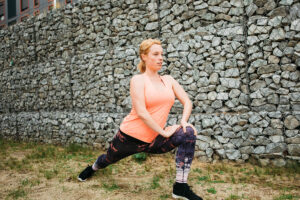One of the most common complaints runners has, especially new runners, is shin splints. Have you ever had a shin splint? Are you frustrated that every time you try to get in shape or turn it up a notch, your lower leg gets tight and painful?
At Austin Manual Therapy Associates our team of physical therapists can help figure out what is causing your pain and help design a program to resolve it and prevent it from returning. Our goal is to help you get back to running pain-free in as short a time as possible!
Shin splints are known in the medical community as medial tibial stress syndrome (MTSS). It is a common condition associated with starting a new exercise program or increasing an existing program. Runners are particularly susceptible to MTSS, and it is considered one of the most common overuse injuries sustained by runners.
At Austin Manual Therapy Associates our physical therapists understand that “runners gotta run,” so we provide clear guidelines for resolving your pain, safely returning to running again, and how to prevent future injuries.
Request an appointment with one of our physical therapists, and let us help you get back to doing what you love!
What is medial tibial stress syndrome?
Medial tibial stress syndrome is defined as pain along the posteromedial (i.e., backside/inner) aspect of the shin bone (tibia) that occurs during exercise. The pain is from too much stress on the shinbone and/or too much stress on the muscles (i.e., soleus and flexor digitorum longus).
Shin splints typically occur in runners who recently intensified or changed their training routines too rapidly. It is also common when runners that have not run for a long time start running again and runners with a previous history of shin splints.
Despite how common shin splints are, the exact cause can be confusing. There are several possible reasons for a runner to develop medial stress syndrome, and fortunately, our physical therapists are experts at figuring out the underlying causes!
Causes of medial tibial stress syndrome.
Shin splints result when muscles, tendons, and bone tissue become overworked. There are a lot of theories about what causes shin splints, but the evidence points to a few consistent reasons. It appears that rather than a single reason, medial tibial stress syndrome is multifactorial, with passive range of motion, muscle strength, pressure distributions at foot contact, and how the lower extremity joints react and respond to the forces of running.
The leading causes and risk factors, besides starting or progressing training too fast or too far, include:
- Hip weakness
- Female runners
- Runners with a higher body mass index
- Greater ranges of hip motion
- Excessive pronation
One of the most common risk factors is having a previous history of shin splints. Factors like the amount of pressure/force at foot contact and the inability to control the pelvis at foot strike all seem to contribute to why shin splints develop.
Unfortunately, runners tend to ignore the early signs of strain and end up with more severe pain. Seeking help from our team can make all the difference between relief and more pain!
What to expect Shin Splint in physical therapy
Our physical therapists start with a thorough evaluation that includes a range of motion, strength, and movement analysis to identify the possible reasons for your symptoms. We will also ask about your previous injuries, current training, and future goals. All of this information will help determine your individualized program.
Our physical therapists at Austin Manual Therapy Associates practice evidence-based Manual Physical Therapy. We believe that in order to achieve the best possible outcomes, it is critical to address the underlying causes instead of only focusing on the symptoms.
In addition to our advanced manual therapy techniques, we will often utilize taping techniques or inserts for pain relief and to improve tissue tolerance to activity. In addition, we will teach you stretching/ mobility work, strengthening, and any appropriate modification to your body mechanics or running technique to ensure that you recover as quickly as possible.
Next, we will focus on progressing your strength and dynamic exercises like balance and coordination work to ensure your foot strikes the ground correctly and can tolerate the forces that running demands. Finally, we will incorporate a “return to run” protocol to assist you in a safe return to training and pain-free running!
Request an appointment at Austin Manual Therapy Associates today!
Our goal is to eliminate the source of your dysfunction rather than just address the symptoms and get you back to your life. We are dedicated to doing what is best for you every time you walk through our doors from start to finish.
Our team of physical therapists will provide the foundation for successful training while reducing future injuries. Call Austin Manual Therapy Associates today to set up an assessment and get the tools you need to get back to running!
Sources:
https://europepmc.org/article/med/29787473
https://bmjopensem.bmj.com/content/4/1/e000421
https://www.ncbi.nlm.nih.gov/books/NBK538479/#:~:text=Medial%20Tibial%20Stress%20Syndrome%20






